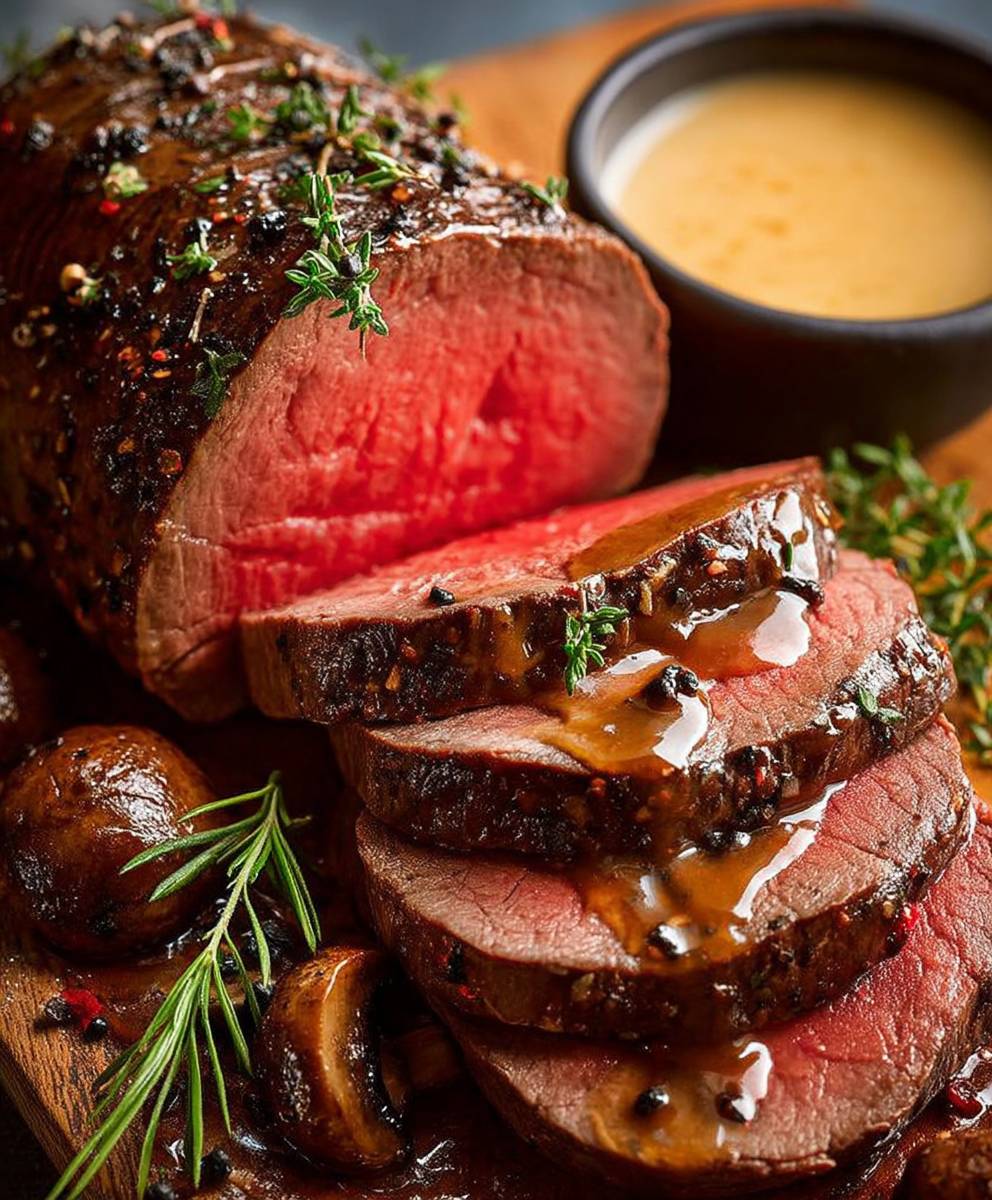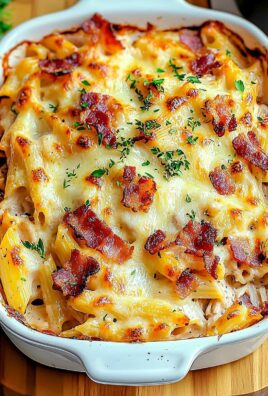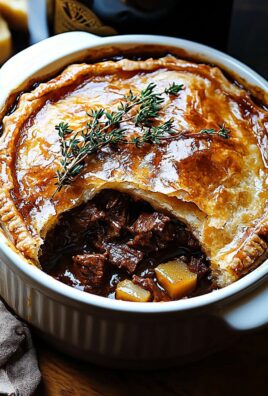Roast Beef Tenderloin: the very words conjure images of elegant dinner parties, holiday feasts, and celebrations filled with joy and delicious food. But don’t let its reputation intimidate you! I’m here to show you that preparing a perfectly cooked, melt-in-your-mouth Roast Beef Tenderloin is surprisingly achievable, even for the novice cook.
Beef tenderloin, also known as filet mignon when cut into steaks, has long been prized for its unparalleled tenderness. Its history stretches back centuries, gracing the tables of royalty and the wealthy. This cut comes from the loin of the cow, an area that doesn’t get much exercise, resulting in its incredibly soft texture. Its a symbol of luxury and indulgence, often reserved for special occasions.
What makes this dish so universally loved? It’s the combination of that exquisite tenderness, the rich, beefy flavor, and the sheer elegance it brings to any table. When cooked properly, each slice practically melts in your mouth, offering a symphony of savory goodness. Plus, while it feels fancy, a well-executed roast beef tenderloin is relatively simple to prepare, making it a show-stopping centerpiece that won’t keep you chained to the kitchen all day. Get ready to impress your guests (or simply treat yourself!) with this foolproof recipe.
Ingredients:
- Beef Tenderloin: 3-4 lb, trimmed of silver skin and excess fat
- Olive Oil: 2 tablespoons, extra virgin
- Garlic: 4 cloves, minced
- Fresh Rosemary: 2 tablespoons, chopped
- Fresh Thyme: 2 tablespoons, chopped
- Kosher Salt: 2 teaspoons, or to taste
- Black Pepper: 1 teaspoon, freshly ground, or to taste
- Dijon Mustard: 2 tablespoons
- Beef Broth: 1 cup
- Dry Red Wine: 1/2 cup (Cabernet Sauvignon or Merlot recommended)
- Butter: 2 tablespoons, unsalted
- All-Purpose Flour: 1 tablespoon
Preparing the Beef Tenderloin:
- Bring the Beef to Room Temperature: This is crucial for even cooking. Take the beef tenderloin out of the refrigerator at least one hour before you plan to cook it, and ideally up to two hours. This allows the internal temperature to rise, resulting in a more evenly cooked roast. Don’t worry about it spoiling; two hours at room temperature is perfectly safe.
- Preheat Your Oven: Preheat your oven to 450°F (232°C). High heat is essential for searing the outside of the tenderloin, creating a beautiful crust. Make sure your oven is fully preheated before you put the beef in.
- Prepare the Herb Mixture: In a small bowl, combine the minced garlic, chopped rosemary, and chopped thyme. This aromatic mixture will infuse the beef with incredible flavor.
- Season the Beef: Pat the beef tenderloin dry with paper towels. This helps to ensure a good sear. Generously season the beef on all sides with kosher salt and freshly ground black pepper. Don’t be shy with the seasoning; it’s what gives the beef its flavor.
- Sear the Beef: Heat the olive oil in a large, oven-safe skillet over medium-high heat. The skillet should be large enough to accommodate the entire tenderloin without overcrowding. Once the oil is shimmering and hot, carefully place the beef tenderloin in the skillet. Sear it for 2-3 minutes on each side, until a deep brown crust forms. This searing process is key to locking in the juices and creating a flavorful exterior. Use tongs to turn the beef and sear all sides, including the ends.
- Apply the Herb Paste: Remove the skillet from the heat. Spread the Dijon mustard evenly over the seared beef tenderloin. Then, press the herb mixture onto the mustard-coated beef, ensuring it adheres well. The mustard acts as a binder for the herbs and adds a subtle tang to the flavor profile.
Roasting the Beef Tenderloin:
- Roast in the Oven: Place the skillet with the beef tenderloin in the preheated oven. Roast for 18-22 minutes for medium-rare, or longer for more well-done. The exact cooking time will depend on the size and thickness of your tenderloin, as well as your desired level of doneness.
- Use a Meat Thermometer: The best way to determine the doneness of the beef is to use a meat thermometer. Insert the thermometer into the thickest part of the tenderloin, avoiding any bone. Here are the target internal temperatures for different levels of doneness:
- Rare: 125-130°F (52-54°C)
- Medium-Rare: 130-135°F (54-57°C)
- Medium: 135-140°F (57-60°C)
- Medium-Well: 140-145°F (60-63°C)
- Well-Done: 145°F+ (63°C+)
- Rest the Beef: Once the beef reaches your desired internal temperature, remove the skillet from the oven. Transfer the beef tenderloin to a cutting board and tent it loosely with foil. Let it rest for at least 10-15 minutes before slicing. This resting period allows the juices to redistribute throughout the meat, resulting in a more tender and flavorful roast. Don’t skip this step!
Making the Red Wine Sauce:
- Deglaze the Pan: While the beef is resting, prepare the red wine sauce. Place the skillet you used to sear the beef back on the stovetop over medium heat. Pour in the dry red wine and use a wooden spoon to scrape up any browned bits from the bottom of the pan. These browned bits, called fond, are packed with flavor and will add depth to the sauce.
- Reduce the Wine: Let the wine simmer and reduce by about half, which should take about 5-7 minutes. This concentrates the flavor of the wine and creates a richer sauce.
- Add Beef Broth: Pour in the beef broth and continue to simmer for another 5-7 minutes, or until the sauce has thickened slightly.
- Make a Slurry: In a small bowl, whisk together the melted butter and all-purpose flour to create a slurry. This slurry will help to thicken the sauce.
- Thicken the Sauce: Slowly whisk the butter-flour slurry into the simmering sauce. Continue to whisk until the sauce thickens to your desired consistency. This should only take a minute or two.
- Season to Taste: Taste the sauce and adjust the seasoning as needed. Add salt and pepper to taste. You can also add a pinch of sugar if you prefer a slightly sweeter sauce.
- Strain the Sauce (Optional): For a smoother sauce, you can strain it through a fine-mesh sieve before serving. This will remove any small bits of herbs or garlic.
Slicing and Serving:
- Slice the Beef: After the beef has rested, remove the foil and slice it against the grain into 1/2-inch thick slices. Slicing against the grain shortens the muscle fibers, making the beef more tender and easier to chew.
- Serve with Sauce: Arrange the sliced beef tenderloin on a platter and drizzle generously with the red wine sauce.
- Garnish (Optional): Garnish with fresh rosemary sprigs or thyme sprigs for a beautiful presentation.
- Serving Suggestions: Serve the roast beef tenderloin with your favorite side dishes, such as roasted potatoes, asparagus, green beans, or mashed potatoes. A simple salad also makes a great accompaniment.
Tips for Success:
- Don’t Overcook: Beef tenderloin is best served medium-rare to medium. Overcooking will result in a dry and tough roast. Use a meat thermometer to ensure accurate cooking.
- Use High-Quality Ingredients: The quality of the beef tenderloin will greatly impact the final result. Choose a high-quality cut of beef from a reputable butcher or grocery store.
- Let it Rest: Resting the beef is crucial for retaining its juices and ensuring a tender roast. Don’t skip this step!
- Adjust Seasoning: Taste the sauce and adjust the seasoning as needed. Don’t be afraid to experiment with different herbs and spices to create a flavor profile that you love.
- Make Ahead: The red wine sauce can be made ahead of time and reheated before serving. This can save you time on the day of your dinner party.
Variations:
- Mushroom Sauce: Substitute the red wine sauce with a creamy mushroom sauce for a different flavor profile.
- Garlic Herb Butter: Instead of Dijon mustard and herbs, spread the beef with a garlic herb butter before roasting.
- Bacon-Wrapped: Wrap the beef tenderloin in bacon before searing for added flavor and moisture. Secure the bacon with kitchen twine.

Conclusion:
And there you have it! This Roast Beef Tenderloin recipe is truly a showstopper, and I genuinely believe it deserves a place on your table, whether it’s for a special occasion or simply a well-deserved treat. The combination of the perfectly seared exterior, the melt-in-your-mouth tenderness within, and the rich, savory flavors makes it an unforgettable culinary experience. It’s not just a meal; it’s a statement.
Why is this a must-try? Because it’s surprisingly simple to achieve restaurant-quality results in your own kitchen. Forget the intimidation factor with a few key techniques and readily available ingredients, you can create a centerpiece that will impress even the most discerning palates. Plus, the aroma that fills your home while it’s roasting is simply divine! Its a feast for all the senses.
But the best part? The versatility! While this recipe is fantastic as is, there are so many ways to customize it to your liking. For a classic pairing, serve it alongside creamy mashed potatoes and roasted asparagus. A vibrant horseradish sauce adds a delightful kick, or you could opt for a rich red wine reduction for a touch of elegance. If you’re feeling adventurous, try a chimichurri sauce for a burst of fresh, herbaceous flavor.
Looking for variations? Consider adding a dry rub of coffee grounds, smoked paprika, and brown sugar before searing for a deeper, more complex flavor profile. Or, for a truly decadent experience, stuff the tenderloin with a mixture of wild mushrooms, shallots, and herbs before roasting. You could even wrap it in puff pastry for a Beef Wellington-inspired dish! The possibilities are endless.
Beyond the sides and sauces, think about the leftovers (if there are any!). Thinly sliced Roast Beef Tenderloin makes incredible sandwiches, perfect for a quick and satisfying lunch. It’s also a fantastic addition to salads, adding a protein-packed boost and a touch of luxury. Or, dice it up and use it in a hearty beef stroganoff. No matter how you choose to enjoy it, this recipe keeps on giving.
I’ve poured my heart into perfecting this recipe, and I’m confident that you’ll love it as much as I do. It’s more than just a recipe; it’s an invitation to create memories, to share delicious food with loved ones, and to experience the joy of cooking. So, gather your ingredients, preheat your oven, and get ready to embark on a culinary adventure.
I truly encourage you to give this recipe a try. I’m so excited for you to experience the magic of a perfectly cooked roast beef tenderloin. And most importantly, I want to hear about your experience! Did you try any variations? What were your favorite sides? What did your family and friends think?
Please, don’t hesitate to share your photos, comments, and feedback in the comments section below. Your insights are invaluable, and they help me continue to improve and create even more delicious recipes for you to enjoy. Happy cooking, and bon appétit! I can’t wait to hear all about your culinary triumphs!
Roast Beef Tenderloin: The Ultimate Guide to a Perfect Roast
Perfectly seared and roasted beef tenderloin, coated in herbs and served with a rich, homemade red wine sauce. This elegant dish is surprisingly easy to make and perfect for special occasions.
Ingredients
- 3-4 lb Beef Tenderloin, trimmed of silver skin and excess fat
- 2 tablespoons Olive Oil, extra virgin
- 4 cloves Garlic, minced
- 2 tablespoons Fresh Rosemary, chopped
- 2 tablespoons Fresh Thyme, chopped
- 2 teaspoons Kosher Salt, or to taste
- 1 teaspoon Black Pepper, freshly ground, or to taste
- 2 tablespoons Dijon Mustard
- 1 cup Beef Broth
- 1/2 cup Dry Red Wine (Cabernet Sauvignon or Merlot recommended)
- 2 tablespoons Butter, unsalted
- 1 tablespoon All-Purpose Flour
Instructions
- Bring Beef to Room Temperature: Remove beef tenderloin from the refrigerator 1-2 hours before cooking.
- Preheat Oven: Preheat oven to 450°F (232°C).
- Prepare Herb Mixture: In a small bowl, combine minced garlic, chopped rosemary, and chopped thyme.
- Season Beef: Pat beef tenderloin dry with paper towels. Season generously on all sides with kosher salt and freshly ground black pepper.
- Sear Beef: Heat olive oil in a large, oven-safe skillet over medium-high heat. Sear beef for 2-3 minutes on each side until a deep brown crust forms. Sear all sides, including the ends.
- Apply Herb Paste: Remove skillet from heat. Spread Dijon mustard evenly over the seared beef. Press the herb mixture onto the mustard-coated beef.
- Roast in Oven: Place skillet in the preheated oven. Roast for 18-22 minutes for medium-rare, or longer for more well-done.
- Use a Meat Thermometer: Insert a meat thermometer into the thickest part of the tenderloin.
- Rare: 125-130°F (52-54°C)
- Medium-Rare: 130-135°F (54-57°C)
- Medium: 135-140°F (57-60°C)
- Medium-Well: 140-145°F (60-63°C)
- Well-Done: 145°F+ (63°C+)
- Rest the Beef: Remove skillet from oven. Transfer beef to a cutting board and tent loosely with foil. Let rest for 10-15 minutes.
- Deglaze the Pan: Place skillet back on stovetop over medium heat. Pour in red wine and scrape up any browned bits from the bottom of the pan.
- Reduce the Wine: Simmer wine and reduce by about half (5-7 minutes).
- Add Beef Broth: Pour in beef broth and continue to simmer for another 5-7 minutes, or until the sauce has thickened slightly.
- Make a Slurry: In a small bowl, whisk together the melted butter and all-purpose flour to create a slurry.
- Thicken the Sauce: Slowly whisk the butter-flour slurry into the simmering sauce. Continue to whisk until the sauce thickens to your desired consistency.
- Season to Taste: Taste the sauce and adjust the seasoning as needed. Add salt and pepper to taste.
- Strain the Sauce (Optional): For a smoother sauce, you can strain it through a fine-mesh sieve before serving.
- Slice the Beef: After resting, slice beef against the grain into 1/2-inch thick slices.
- Serve with Sauce: Arrange sliced beef on a platter and drizzle generously with red wine sauce.
- Garnish (Optional): Garnish with fresh rosemary or thyme sprigs.
- Serving Suggestions: Serve with roasted potatoes, asparagus, green beans, or mashed potatoes.
Notes
- Don’t overcook the beef tenderloin; it’s best served medium-rare to medium.
- Use a high-quality cut of beef for the best results.
- Resting the beef is crucial for retaining juices and ensuring a tender roast.
- The red wine sauce can be made ahead of time.
- Variations: Try a mushroom sauce, garlic herb butter, or bacon-wrapped tenderloin.





Leave a Comment